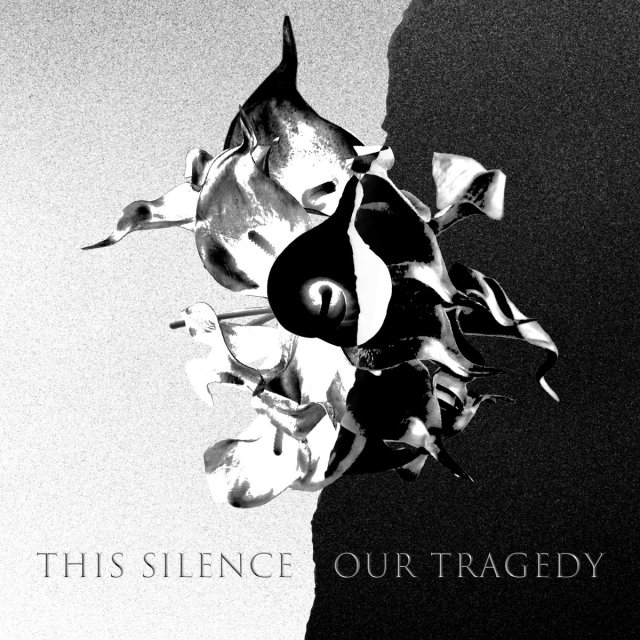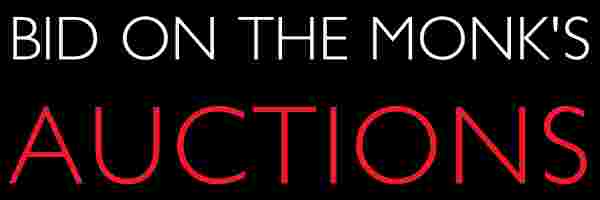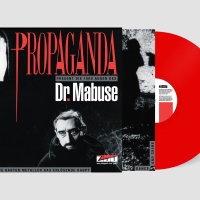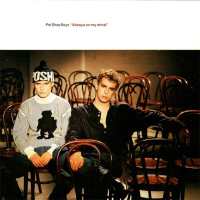Over two years ago, my friend JT commented in a thread asking if I had read Byrne’s book “How Music Works.” Deeming it “fairly stunning.” I replied no, but was at least aware of it. I had a friend having an “event birthday” so I wanted to send him a gift. I went to the local bookstores and the used one had nothing vital, but Malaprops had the new printing of Byrne’s book on the shelf. I picked it up and sampled it. JT was right. I was immediately grabbed by what I had chanced upon. As I recalled, my friend had time for Byrne/TVLKING HEVDS but really, I could see anyone enjoying this book. Fan or not. I purchased the new edition and asked my wife if she had the book at her library. She did. So it came home with her fairly quickly.
The book was a bit of a chimera. By the title I thought it was going to be one of those books like Oliver Sack’s “Musicophilia.” Yes, in a few places, it did get into the mental and physiological effects of music on the human mind and body. But the book was really quite sprawling. The first chapter did go into the evolutionary and sociological reasons why certain forms and practices of music took hold. For example, did you know that Arena Rock evolved because bands were playing in large venues with lousy sound as rock got more popular. The lack of subtlety was an intention of the form itself for very practical acoustic reasons. This introductory chapter was a good précis for where this book would ultimately go. The second chapter was “My Life In Performance.” A succinct summarization of his career onstage from busking to solo tours. All made interesting by Byrne’s conversational, matter-of-fact tone. Byrne claims at one point to have mild Asberger’s Syndrome, and I would not dispute that, based on what I have read, but presumably this is what given him the clinical, somewhat distant point of view that he puts across here. He is by no means didactic. If he postulates a theorem, then he is quick to undercut it with a disputing fact or point of view in the next paragraph. I suppose we can read between the lines and view his thesis statements as his true feeling on any matters discussed here, no matter how disingenuous he tries to come across by including antithetical postulations afterward.
He gives a good history of recorded sound with chapter three dedicated to analog and chapter four dedicated to digital. It’s amazing to consider that digital recording has only been around for 40 years. Accordingly, the digital sound chapter is only half the length of the preceding one. Chapter five discusses the changes that The Recording Studio has gone through in its history. All of his personal experiences were drawn upon here as he has seen a lot of change on this topic and his opinions here have a lot of data to draw upon. Each of his album experiences get referenced as the book progresses, but there there was a treasure trove of discussion on the seminal “My Life in The Bush Of Ghosts” and “Remain In Light” albums. On the other hand, he also delved deeply into his completely- uninteresting-to-me “Rei Momo” album with equal gusto. That was when I wrote Byrne off for decades.
Chapter seven was to me, justification for the entire book. “Business And Finances” addresses “distribution and survival options for musical artists.” In the utterly transparent chapter [and at 48 pages, it’s the longest chapter by far in the book] Byrne detailed the various schema by which an artist could release music that they had created using six basic models ranging from a 360 deal where the label takes a bit of every potential dollar earned by the artist to the 100% d.i.y. methodology that is now possible with the lower cost of recording music. And all point in between. Throughout each section, Byrne relates his own financial debits and credits that were his lot as he explored the various ways to release an album.
Sometimes he wanted to achieve a certain sound and on 2004’s “Grown Backwards,” he spent a long period with many guest musicians [woah! Carla Bley, Steve Swallow, and John Linnell!] making the album. It cost almost his full $225,000 advance from Nonesuch. He ended up with $7,000 of that left. He reasoned [correctly, at the time] that this was the last gasp of Big Labels [even big boutique labels, like Nonesuch] giving quarter million dollar album advances, and that he may never get a chance to make such an elaborate recording again. He sold 140K copies of the album and netted $58K in profit. This contrasted with the album he made with Brian Eno in 2008, “Everything That Happens, Will Happen Today.” [see inset] In this case he and Eno owned the recording 100% and released it themselves. It cost a modest $49K to record [ but totaled $315K full expenses] and sold 160K copies, netting a profit of $649K to be split equally between Byrne and Eno. Byrne stated that his goal was to not go into the red on any project; as long as something at least broke even, he was satisfied with the outcome. One “Everything That Happens, Will Happen Today” goes a long way for balancing out a “Grown Backwards.” But by the same token, the $315K in that album’s expenses show that anyone who is not already a millionaire rock star really can’t afford to mount a self-owned project of similar scope. There are a lot of pie charts in this chapter! And let me just say for the record that the details that Byrne coughs up of the finances that drive the bus are utterly gripping reading!
As a music fan largely besotted with fringe-dwelling music, exactly how musicians I like can afford to make music is an endlessly fascinating topic for me. It’s exceedingly rare for someone on the inside to talk about this topic much using realistic numbers. It’s an eye opener that I had a lot of respect for. One shortfall of the book is that it was published in 2012, so CDs were being overtaken by downloads. Streaming didn’t enter into it. Byrne took time to complain about the 30% standard iTunes take for each DL sold. And I’m there with him. As the iTunes store’s reach expanded first with iPods, and then iPhones, I think they should have scaled their artist charges back as they expanded their coverage of the market. 30% seems like Apple is grasping to me as well. Byrne pointed out that manufacturing costs now are at zero but the artist sees the same amount of royalty from the label as when all of that plastic and PVC needed to be manufactured and shipped around the world. Someone’s getting rich and it’s not the artist. But that’s nothing compared to how the artist gets much more effectively screwed in the streaming hellverse that we now inhabit. I would have loved to have heard what Byrne would have made of Spotify. I’m guessing it would not be kind. I would love to see Byrne blow these 48 pages up into a discrete book that has even more detail.
The chapter on “How To Make A Scene” was a useful primer on how and why such “scenes” form. I recall that once Orlando got a “scene” there was music flowing copiously almost every night of the week that we went out to see. Hell, I might not be married now but for the “local scene” at the time, where I met my wife. The book wrapped up with a look at how the patterns and ratios of music are related to the physical constants of the universe. There were some pretty far out theories on deck, but the book was a ultimately a very engaging look at a multiplicity of viewpoints about music as it related to art, politics, society, evolution, and commerce; bringing his own experiences into the proceedings whenever he could. I have to admit that the 2017 printing of the book, as shown on this post, intrigues me since it has another new chapter added that the 2012 hardcover I read did not also sport. But it’s on digital curation, not streaming. I guess Byrne thought he’d already had his final word on Spotify in 2013, a year after the book was originally released, but that was then, and this is now. I’d like to see Byrne give us an update on that burning issue. But in the interim, this highly recommended book will inform and provoke with its insights and thoughts.
– 30 –









![Chris Cross: 1952-2024 [part 2]](https://postpunkmonk.files.wordpress.com/2024/04/ultravox-cross.jpg?w=200&h=200&crop=1)




Interesting piece about a book I’d probably enjoy. However, you have numerous misplaced dollar signs in front of numbers which appear to be quantities of units sold, not amounts of money.
LikeLike
Mark Moerman – Write in haste, live in haste …do everything in haste since time keeps on slipping through our fingers. One salient fact about the recent Eno album was that the total sales on that one was an impressive $964K! But since Byrne/Eno were responsible for all manufacturing/marketing, and that came to a total budget of $315K. One glaring thing I balked at was the 18% design fees – $56K!! Getting the overrated [there… I said it!] Sagmeister Inc. to design your CD is like throwing money into a fire pit. They won a Grammy for “Everything That Happens, Will Happen Today” but I would not have gone there. I like the music on it far more than the mediocre design work on that CD.
LikeLike
Sounds like a great read! I’ll add the book to my wish list. I’m not sure I’ve read any (gasp!) non-fiction books about music. I’m interested in reading the music scene chapter. I’ve heard great things about the Orlando goth scene. A couple of women from Orlando who I met at a Gary Numan show kept telling me to check out The Castle.
Youmentioned Spotify, and while I’m not sure its affect on more popular artists, I have heard some positives of streaming. I’ve read that streaming services are making newer or more obscure bands more money than before since more people currently are opting for paid subscriptions (of which artists get a small piece) rather than ripping off bootleg mp3s (which I ashamedly used to do years ago, as did many folks). It’s also helping people discover new bands, which then leads to more sales of tickets, LPs and merch. The whole listening experience is totally different on streaming services, of course, but I’m hesitant to condemn them outright. I will say, when I listen on Youtube, I try to listen from bands’ official pages so that they get money from the ads.
Also, relevant to David Byrne, I got to check out Howard Finster’s Paradise Garden this past weekend! The museum video talked about Finster’s work making the cover for the Talking Heads album “Little Creatures.”
LikeLike
Odd Ghoul Out – You say you’ve not read any non-fiction books about music… well what else is there???!! So there’s an actual goth scene in Orlando now? Back in my day, we had to trek up to Hot-Lanta for Masquerade! But I’m oooooold. Any goths in the 80s and early 90s just hung out at Visage and we all danced to Sisters Of Mercy. I never used to like that band when I first heard them until I heard so much of their hits being played so often in clubs that it all kind of sunk in and now I’ve had a complete Sisters collection for decades. I’ll never forget the time we saw them at HOB Downtown Disney. I’ve never seen as much dry ice anywhere else!
LikeLike
What else is there? Well, since you asked…
Two fiction books about music come immediately to mind, both very good reads: https://en.wikipedia.org/wiki/Espedair_Street
https://en.wikipedia.org/wiki/The_Armageddon_Rag
The first is UK and among the many wonderful non-Science Fiction titles by the late master, Iain Banks. I think you’d like it. The second, is by some unknown hack who goes by the name George R.R. Martin. I heard he’s had some success in recent years with some fantasy series books turned into video.
LikeLike
There’s a pretty vibrant goth scene in Orlando from what I’ve heard. The Castle and Crowbar are the hangout spots. There’s a small music festival happening in those two places in October called Absolution Fest. I can’t go that weekend, unfortunately. We’ve got an active scene up here in Atlanta still. Although we don’t have a dedicated club or bar, there is least one goth night every week, and so many bands come here to play. I don’t know if you knew, but the original Masquerade is being turned into luxury apartments and shopping…figures. They did re-open the Masquerade in Underground ATL though. It’s just not the same.
Also, I’ve envious of your getting to see the Sisters of Mercy! When I really started getting into music, the Sisters was one of the first bands that made me feel euphoric and wanting to hear more. I’ve never been able to see them.
About the book situation, I was an English major in college…I usually read fiction or books about fiction. I’ve been reading more non-fiction since graduating, but I just love how fiction feeds the soul.
LikeLike
Odd Ghoul Out – You stab ay my heart with those words! Masquerade turned into luxury apartments and shopping??!! Is nothing sacred? That’s just so inevitable and evil, that I am not actually shocked. It fits right into this 21st century hellscape that we inhabit! And the notion of Masquerade being injected into Underground Atlanta; the most bogus tourist trap district this side of Downtown Disney® is just repellent and wrong on every level.
For those who have not had the pleasure, Masquerade was the prime rock club of Atlanta “back in the day.” I started going there in 1990. My friend Jeffrey took me there when I trekked to Atlanta for the first Cocteau Twins concert I ever saw. Even when we were not seeing shows there on the frequent Atlanta weekenders my friends and I took, we’d try to always go to Masquerade as it was a great club. It was a huge former industrial building in the Fourth Ward on a stretch of North Avenue with not much else. It had three main rooms. Hell; the dance floor downstairs. Purgatory; where the main bar and pool tables were. And then above was Heaven; the concert space. I believe that the only show I actually saw there was the incredible Pete Burns performance that is etched into my skull from 1993 or so.
LikeLike
i am most interested in the economics of the current market place, which this book seems to pre-date. I’ve seen screencaps of pathetically small royalty payments from streaming services to a couple of artists that I follow on Facebook and in a few cases asked, how do you make the most money? I want to support you, tell me the best way, because right now I am a mp3 buyer/downloader and if they make more money from physical cd sales I want to know.
Not one person has responded in any way, shape or form.
Post a pic and grouse about being underpaid and when someone asks, “what should I do?” crickets.
I get it that the problem is complex.
I’m also part of a phalanx of fandom that pays with money.
LikeLike
Tim – Yeah, since this book was written PledgeMusic has sprouted up and crashed down in flames of avarice. He mentions Kickstarter and Amamda Palmer and her $800K take briefly in the book. Streaming is a chump’s game thanks to the labels who always find a way to finagle the cash out of the artists’s pockets.
LikeLike
For the record, I am not much of a fan of streaming from an artist perspective, but the appeal of it from a consumer perspective is incredibly strong. In Apple’s defense I would point out that 30 percent is far less than the physical distribution (CD) model, where the distributor takes anything up to 50 percent and the creator/label/store fight over the remainder! I remember Paul McCartney (during the height of the CD era) complaining that his latest (at the time, early 90s) album paid him a dollar per copy sold — this was when new CDs were $18.
Apple, Amazon, Google, and the other online music stores (we’re talking only song or album sales at the moment) don’t have any manufacturing costs, that’s true — but they provide a backend of promotion, sales, and accounting (not to mention infrastructure) that would certainly warrant at least 20 percent by my reckoning. As the record resurgence proves, manufacturing costs weren’t a notable percentage of the total cost back in the day.
Where artists are really getting ripped off is the streaming payments, which are generally measured in hundreths of a cent per play. For the record, Apple Music pays the most of the various streaming services, but that’s not much of a compliment — it’s still a pathetically small amount of money compared to buying the CDs (even after all that “pre-taking” from the distributor, store, and label). Until recently, pre-1974 songs were paid essentially zero from streaming services!
LikeLike
Pingback: Book Review: Chris Frantz – Remain In Love | Post-Punk Monk